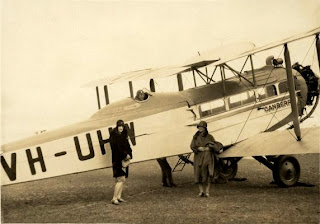Well before there was a Hoyts Cinema at the Eastgardens Shopping Centre movie stars flocked to Australia’s own Hollywood, Pagewood Film Studios.
In 1954 Pagewood Studios, which was located near the current Eastgardens Shopping Centre site, had become the centre of Australia’s biggest film colony.
 |
| WARDROBE MASTER Cy Howe fits a cloak on actor Gordon Chater. The wardrobe department is in a converted army hut once used as an officers' mess. |
Tucked away among rows of neat suburban red-roofed cottages and backed by sandhills, the studios outwardly bear little resemblance to the Hollywood seen in films.
There are no shiny, high priced limousines standing outside, no glamorous blond stars or glittering neon lights, no giant iron gates and uniformed attendants barring entrance to any but the privileged few with passes.
But behind the administrative building, in former army huts, in makeshift workshops, and in the two huge studios where indoor shots are filmed there is all the excitement, the glamour, and the hard work of Hollywood.
At the studios, the catchy old tune “You Ought to Be In Pictures” has been given a new boost in popularity.
It’s the tune that the “backroom boys” – the cameramen, electricians, hairdresser, and dressers – whistle cynically, but with a grin, when they are old that they will have to work back or that shooting schedules have been changed suddenly.
In spite of the long exhausting hours, the tedium of endless rehearsals, the difficulty of transport to the studios, and the back-breaking hard work that goes o behind the scenes, few members of the unit would willing change places with a placid nine-to-five worker.
“It’s nerve racking, it’s hard work, this movie business” Warren Mearns, head electrician, told me “and you don’t get much time to yourself. But it gets you in. You either love it or it drives you crazy. Me, I’ve caught the bug.”
The “bug is the excitement, the glamour, the creativeness, the variety, and the fascination of the movie industry that I had a brief glimpse of when I spent two days at Pagewood.
Do you have any memories or know any stories about the studios or film and television in the Botany area?
Hard work and glamor. (1954, December 8). The Australian Women's Weekly , p. 20. Retrieved January 6, 2011, from http://nla.gov.au/nla.news-article46946484
Read more...









